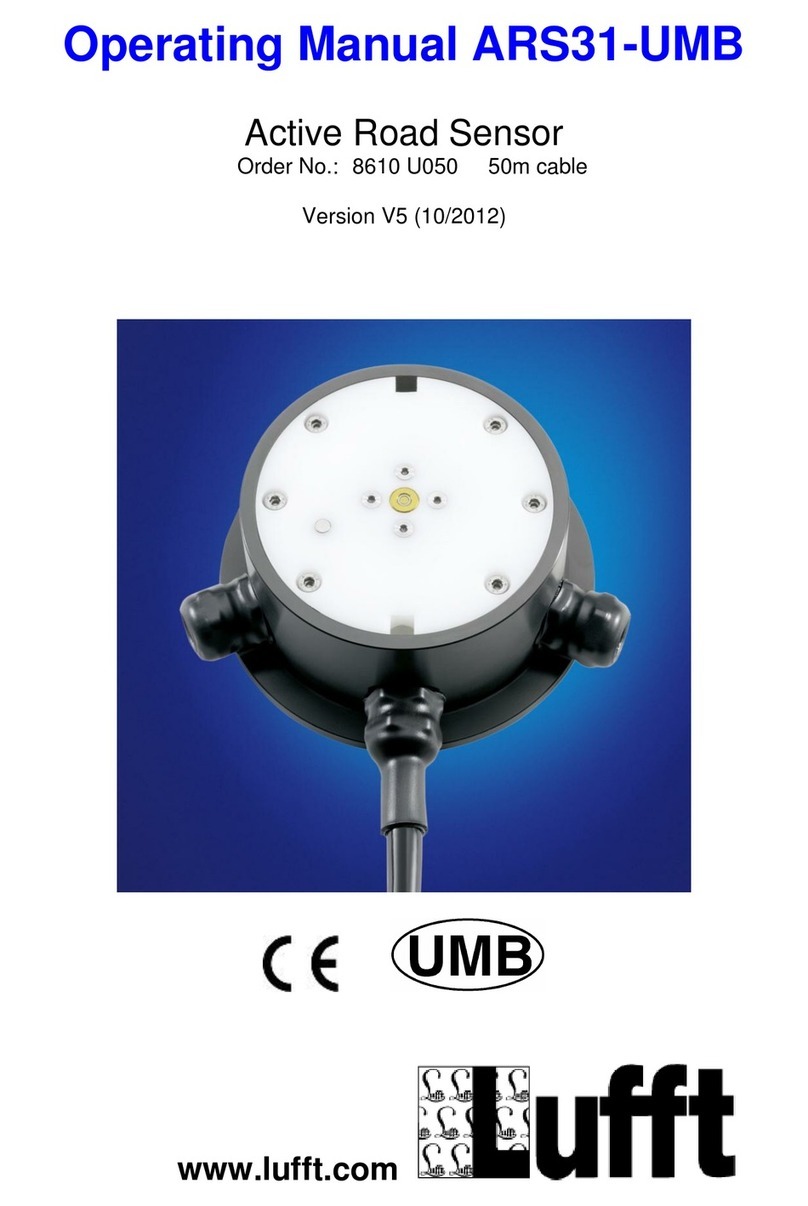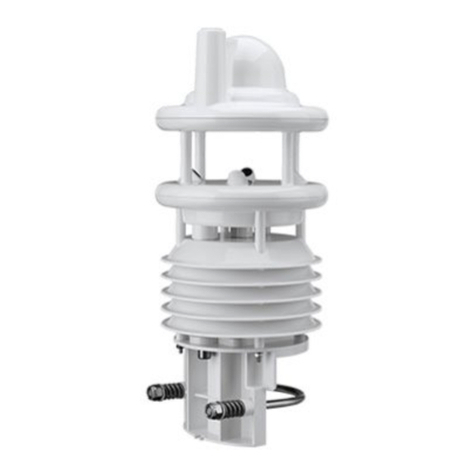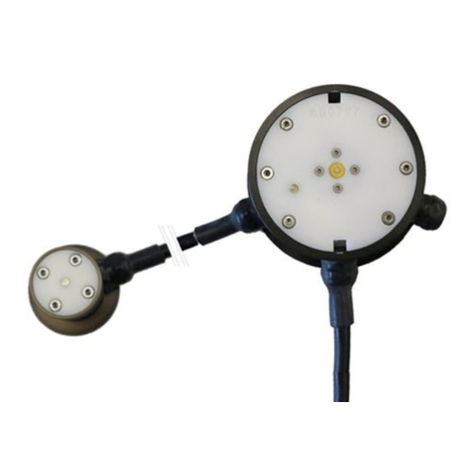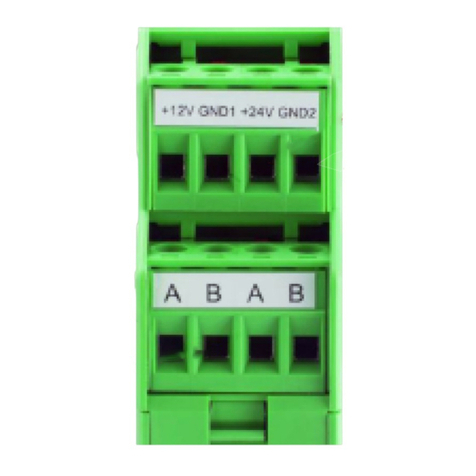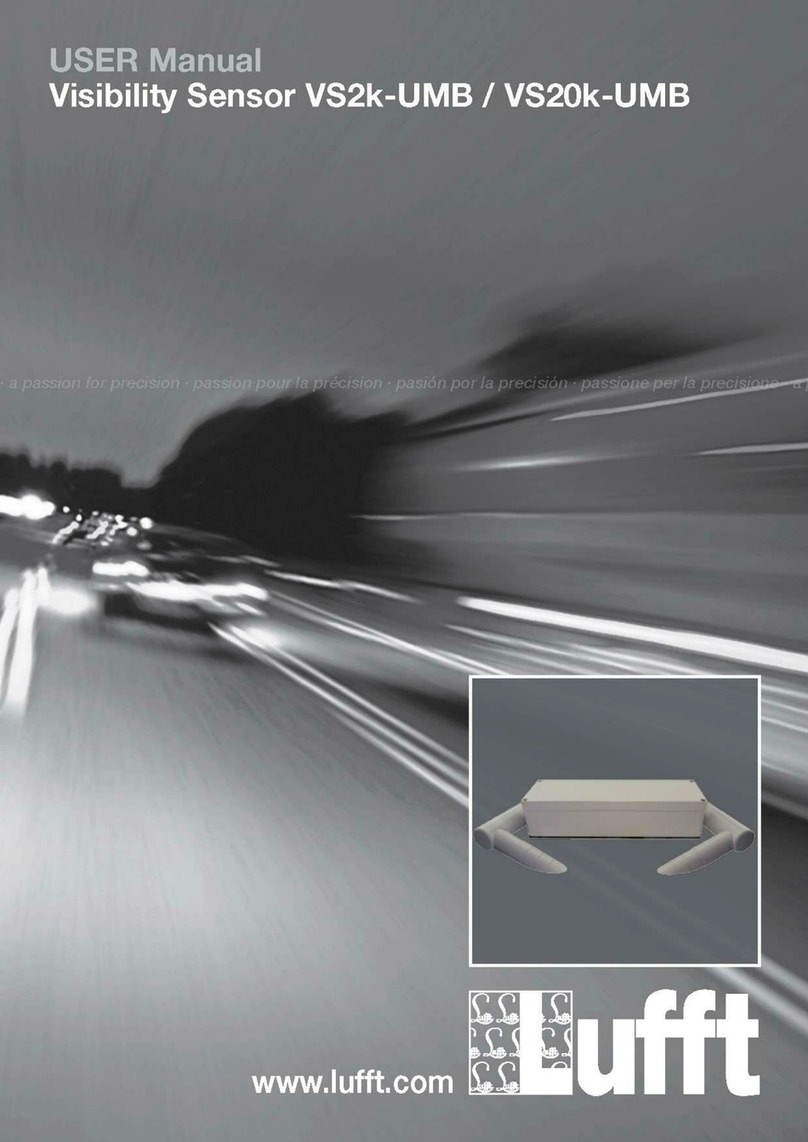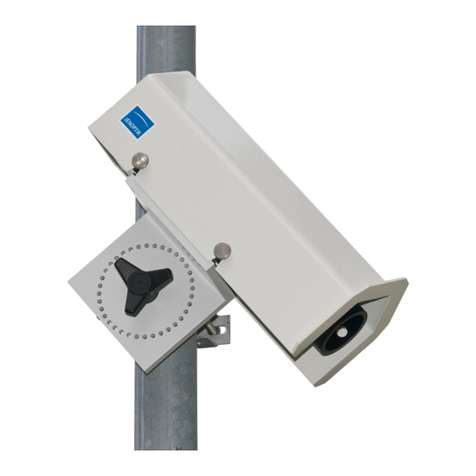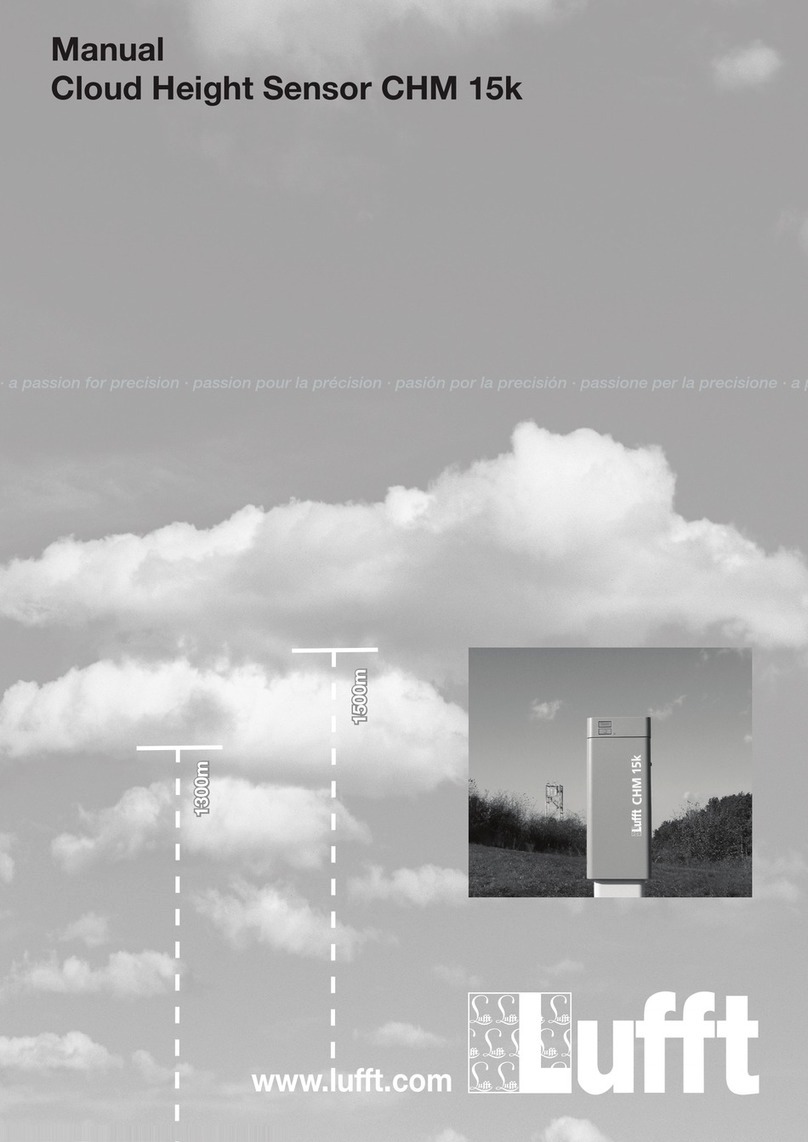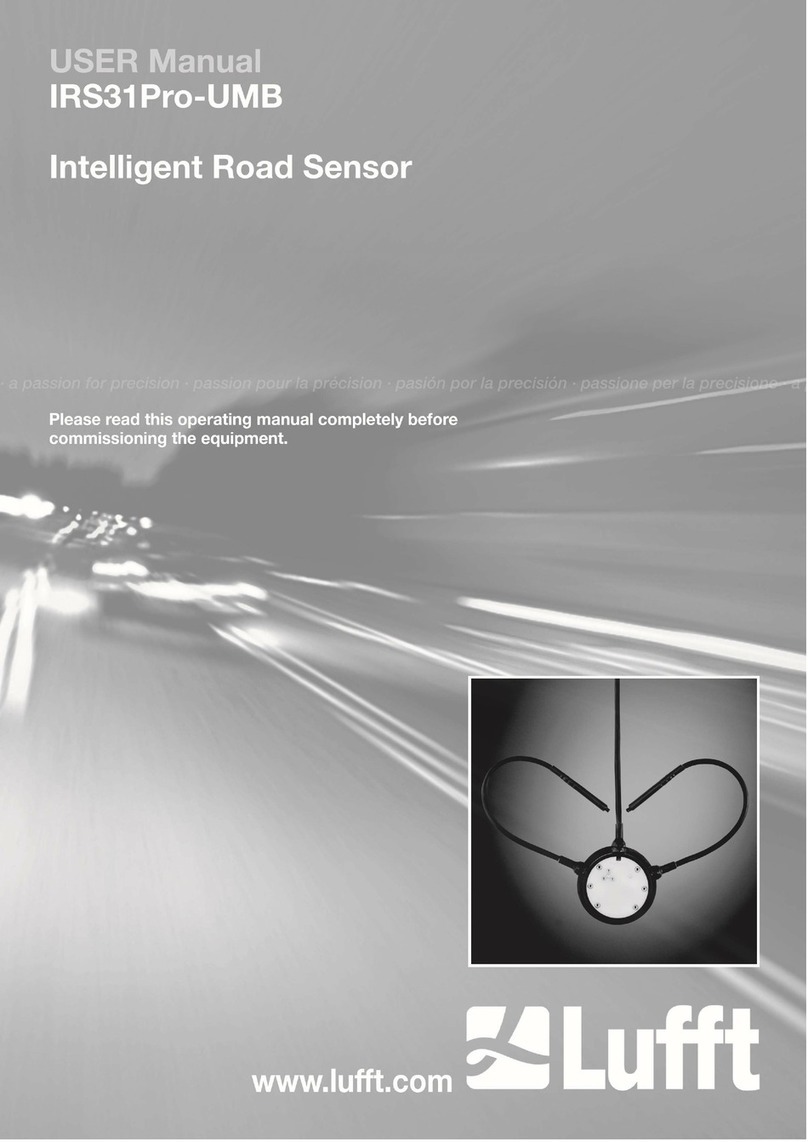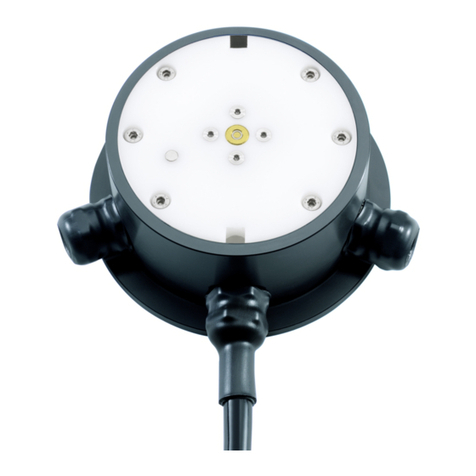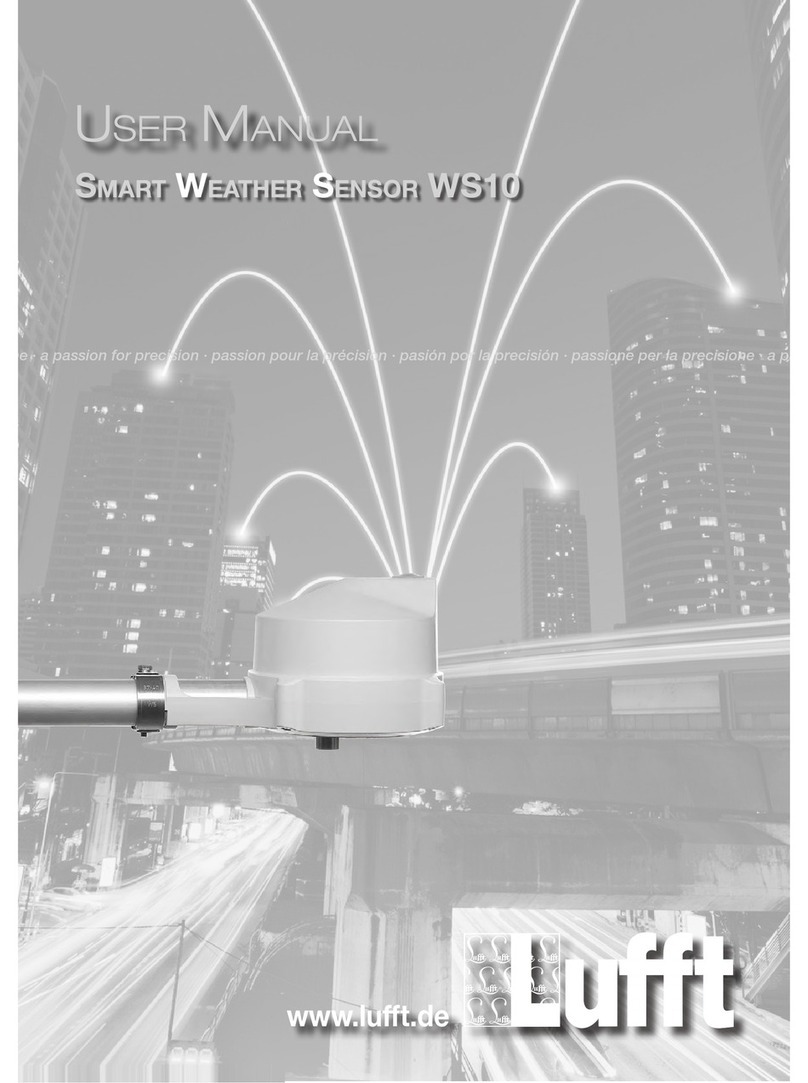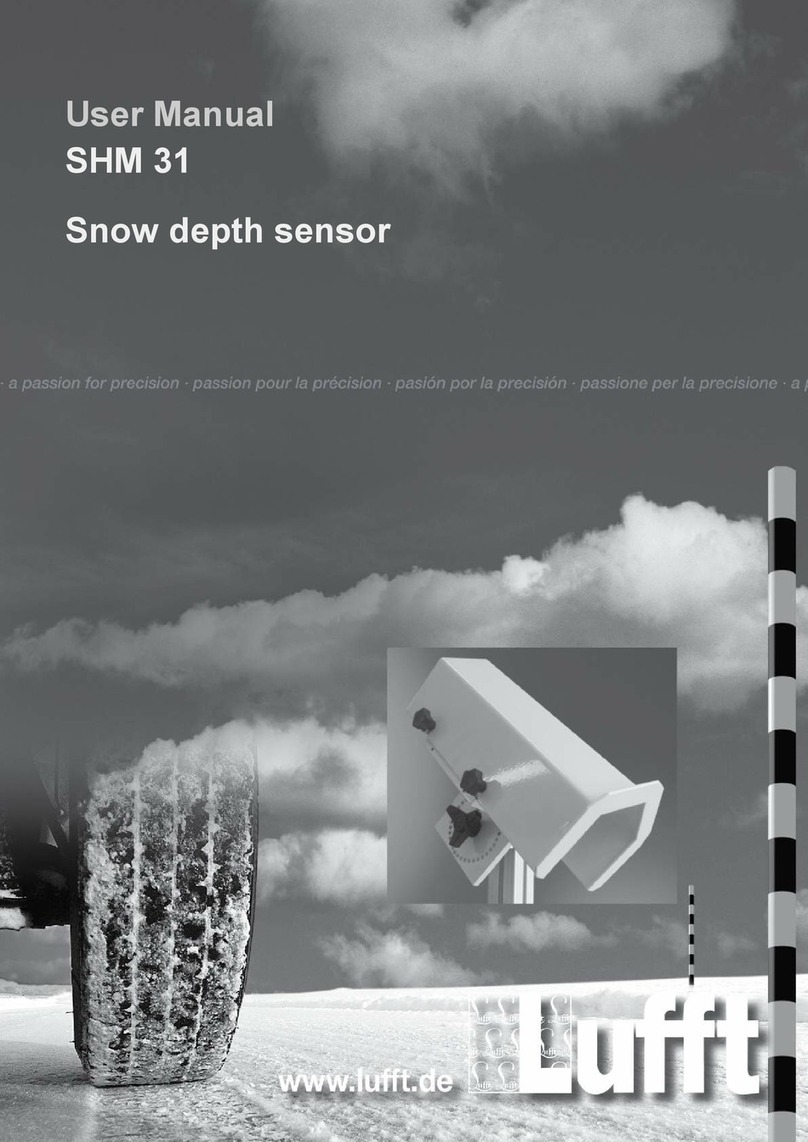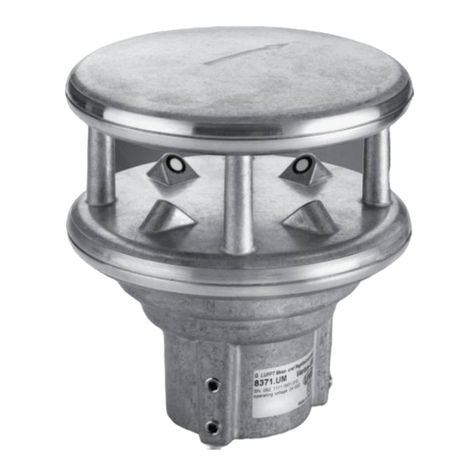
Operating Manual V8.2/03.2017 Non Invasive Road Sensor
G. Lufft Mess- und Regeltechnik GmbH, Fellbach, Germany 3
Contents
1Please Read Before Use.............................................................................................................................................5
1.1 Symbols Used .....................................................................................................................................................5
1.2 Safety Instructions...............................................................................................................................................5
1.3 Designated Use...................................................................................................................................................5
1.4 Incorrect Use.......................................................................................................................................................5
1.5 Guarantee............................................................................................................................................................5
1.6 Brand Names.......................................................................................................................................................5
2Scope of Delivery........................................................................................................................................................6
3Order Numbers............................................................................................................................................................7
3.1 Accessories.........................................................................................................................................................7
3.2 Spare Parts..........................................................................................................................................................7
3.3 Additional Documents and Software....................................................................................................................7
4Equipment Description...............................................................................................................................................8
4.1 Road Surface Temperature.................................................................................................................................8
4.2 Water Film Height................................................................................................................................................8
4.3 Ice Layer Thickness.............................................................................................................................................8
4.4 Road Condition....................................................................................................................................................8
4.5 Ice Percentage ....................................................................................................................................................8
4.6 Freezing Temperature.........................................................................................................................................8
4.7 Saline Concentration ...........................................................................................................................................9
4.8 Snow Height ........................................................................................................................................................9
4.9 Friction.................................................................................................................................................................9
4.10 Sensor Technology NIRS31-UMB.....................................................................................................................10
5Generation of Measurements...................................................................................................................................11
5.1 Current Measurement (act)................................................................................................................................11
6Operation Modes.......................................................................................................................................................11
6.1 Normal Operation..............................................................................................................................................11
6.2 Energy Saving Mode .........................................................................................................................................11
7Measurement Output ................................................................................................................................................12
7.1 Measurements...................................................................................................................................................12
7.2 Additional Sensor Information............................................................................................................................15
8Installation.................................................................................................................................................................17
8.1 Fastening...........................................................................................................................................................17
8.2 Aligning the Sensor............................................................................................................................................18
8.3 Selecting the Installation Location .....................................................................................................................19
9Connections ..............................................................................................................................................................22
9.1 Equipment Connector........................................................................................................................................22
9.2 Pin Assignment..................................................................................................................................................22
9.3 Supply Voltage ..................................................................................................................................................22
9.4 RS485 Interface.................................................................................................................................................22
9.5 Connection to ISOCON-UMB (8160.UISO).......................................................................................................23
9.6 Use of Surge Protection (8379.USP).................................................................................................................23
10 Commissioning.........................................................................................................................................................24
10.1 Conditions for the Initial Commissioning............................................................................................................24
10.2 Important Instructions for Commissioning..........................................................................................................24
11 Sensor Adjustment...................................................................................................................................................25
11.1 Readjustment using the UMB Config Tool.........................................................................................................25
11.2 Adjustment during Operation.............................................................................................................................25
12 Configuration and Testing........................................................................................................................................26
12.1 Factory Settings.................................................................................................................................................26
12.2 Configuration with the UMB Config Tool............................................................................................................26

